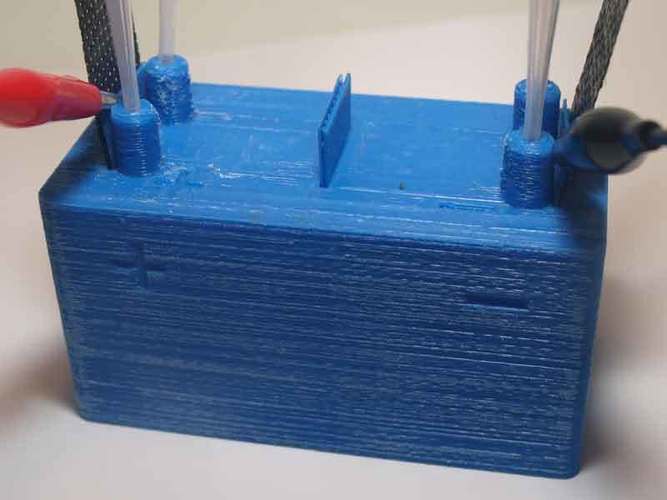
Microbial fuel cell (bio battery)
pinshape
Lots of Science and Lots of Fun! This is a Work in Progress, Part of My Home Science Project. I'll Keep it Simple and Focused on Technical Details. So far, I've Successfully Run an LED Flashlight and a Small Toy Car Using This Battery Design. Multiple Batteries Can Be Connected in Series or Parallel to Get the Desired Voltage or Current. Making this design work doesn't require any special skills. This type of battery is a great teaching tool for various fields like biology, chemistry, electronics, and programming. To get most of these batteries, I use a small device called a joule thief (link included) and also monitor their voltage continuously using an Adafruit data logger (link included). Producing electricity this way is especially interesting in remote locations where electricity is not available. Read all about microbial fuel cells (MFCs) in: [1,2] Design: Here are two versions of the same design - one that's all-in-one and the other with a separable upper part. Choose the version depending on your 3D printer and preferences. If you're using a printer that can't print more than 3 cm in the air, choose the version with the separable upper part. While printing this, my extruder settings were: Infill: 10% Layer thickness: 0.27mm Without any support And speed of printing was on maximum as seen on photos (I recommend lower speed of printing and/or post-processing in terms of sanding or glossing over using acetone) Explanation: On the battery's upper side are four tubes for filling with needed fluids, three slots for inserting electrodes, and one slot in the middle for a semi-permeable membrane. Three thin frames that fold in half when printed serve as support for electrodes and membrane. Additional Materials Needed: Pair of electrodes (I use carbon cloth because of huge surface area but other materials like steel or aluminum should also work) Pair of wires for connecting loads to the battery Semi-permeable membrane (I use commercially available membranes, but cellophane or a salt bridge should also work) Some oxidizing agent for the cathode chamber (I use potassium ferricyanide in 0.02 M concentration - link included. If using this chemical compound, consider safety precautions.) Optional: rubber tubing for filling fluids into the battery Note: If you're not familiar with chemicals and semi-permeable membranes, you can modify this design by placing one electrode in the slot for membrane (middle slot) leaving one side of microbial fuel cell empty. To maximize performance, fresh air should be pumped into the empty part to allow chemical reactions to happen. Literature/links: [1] http://web.mit.edu/pweigele/www/SoBEI/Info_files/Logan%202006%20Environ%20Sci%20Technol.pdf [2] http://www.engr.psu.edu/ce/enve/logan/bioenergy/research_mfc.htm Joule thief: http://cdn.makezine.com/make/wp_joule_thief.pdf Adafruit data logger: https://cdn-learn.adafruit.com/downloads/pdf/adafruit-data-logger-shield.pdf Semi-permeable membranes: http://www.membranesinternational.com/tech-cmi.htm Potassium ferricyanide: http://www.sciencecompany.com/Potassium-Ferricyanide-100g-P6372.aspx For additional information, search the Internet typing "microbial fuel cell" or "MFC".
With this file you will be able to print Microbial fuel cell (bio battery) with your 3D printer. Click on the button and save the file on your computer to work, edit or customize your design. You can also find more 3D designs for printers on Microbial fuel cell (bio battery).
